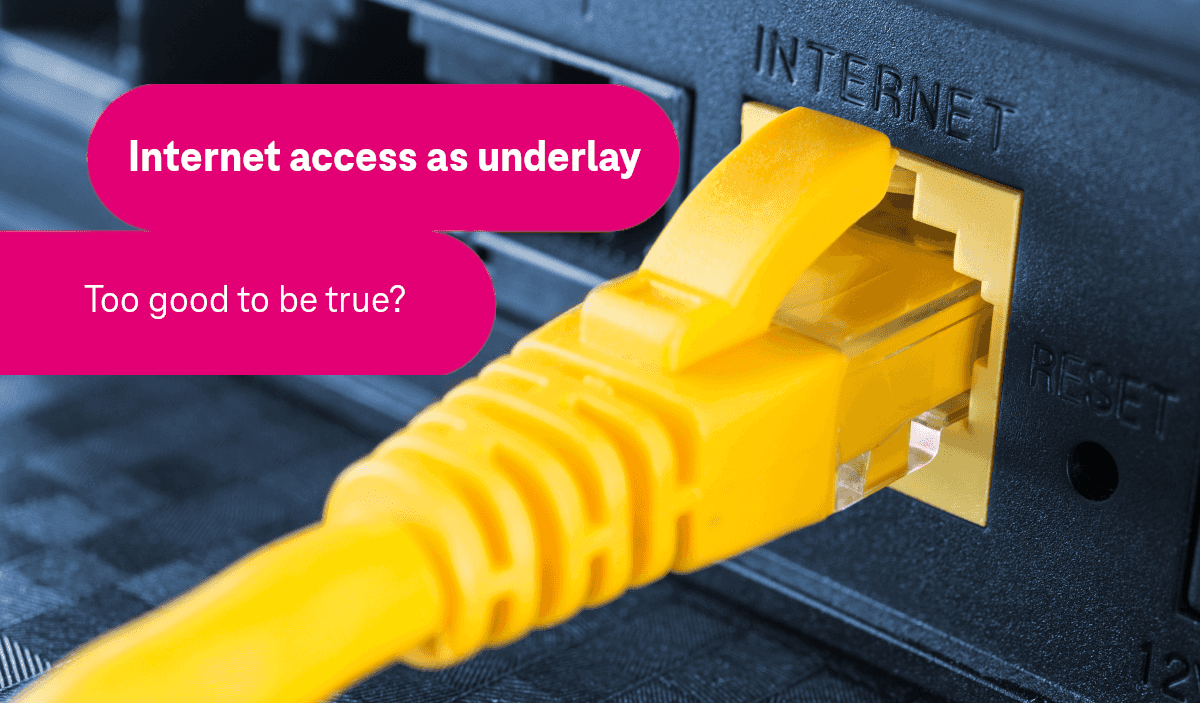Internet Access as Underlay – Too Good to be True?
02/08/2022 by Lisa Clare

The internet is becoming a popular underlay option for SD-WAN. However, this can raise many questions and cost is not always the main driver to deploy it. We are told internet up-time and having a decent connection is always subject to usage, because you must share it with others.
Why then, are we thinking internet, if there are few to no SLA assurances, or if congestion is a known daily hazard? Internet can mean congestion, just like the journey home in the car on a Friday evening, you might get a fraction of the speed you could have, because there is a chance everyone is doing the same thing at the same time and there are no guarantees of priority.
Another consideration: Internet problems in transit may not be an issue, but any persistent problems still need a root cause. That will be important for those in customer relationship roles.
We do see, increasingly, requirements for Internet Access services (IAS) in RFI’s and it could be for lowering costs, but not always. If internet access can achieve lower costs, then it is natural to expect overlay technology of SD-WAN (and its traffic handling) to cope with any ‘wobbles’ in the network.
If the underlay is based on IAS, problems still need to be noticed, picked up and fixed. Problem resolution for connections that send data straight to its destination is more straightforward, but how is anyone expected to find a root cause in the expanse of the Internet? With monitoring tools, not only is cost to be considered but you are also getting into a design conversation such as “should I have Internet “breakout” connections for Office 365?”
The need for more tools and the network design with it, will often bring the conversation back round to cost. What is the primary driver for network strategy long term with your stakeholders? Cost, more recently, is only part of the discussion; COVID-19 has piled pressure on the shoulders of CIOs to think long term about where they want their data, applications, and employees. IAS, if deployed sensibly with SD-X technology, can support the latter, for instance, given that many employees have broadband at home already. Employees working from home is not the only issue to address when considering using IAS as underlay; based on industry type, decisions for placement of Applications and Data storage might naturally follow decisions about Employee placement. Network connection types that send data straight to the destination still have a purpose and shouldn’t be dismissed, but what does your Business need? What problems does your business face? Let’s start with that, and technology options including where to deploy Internet (IAS), will follow.
Do you want more insights from smart connectivity and network professionals?
